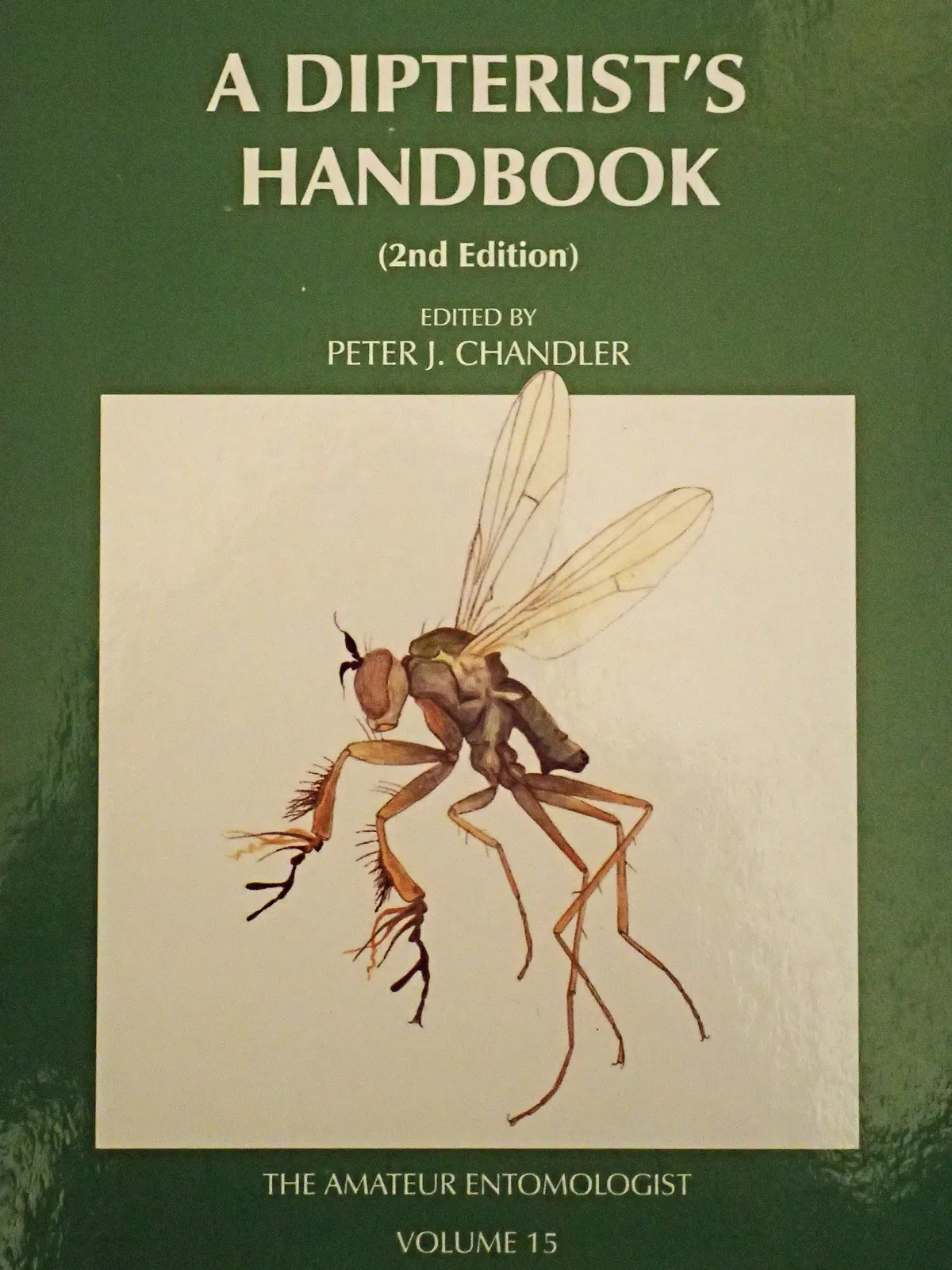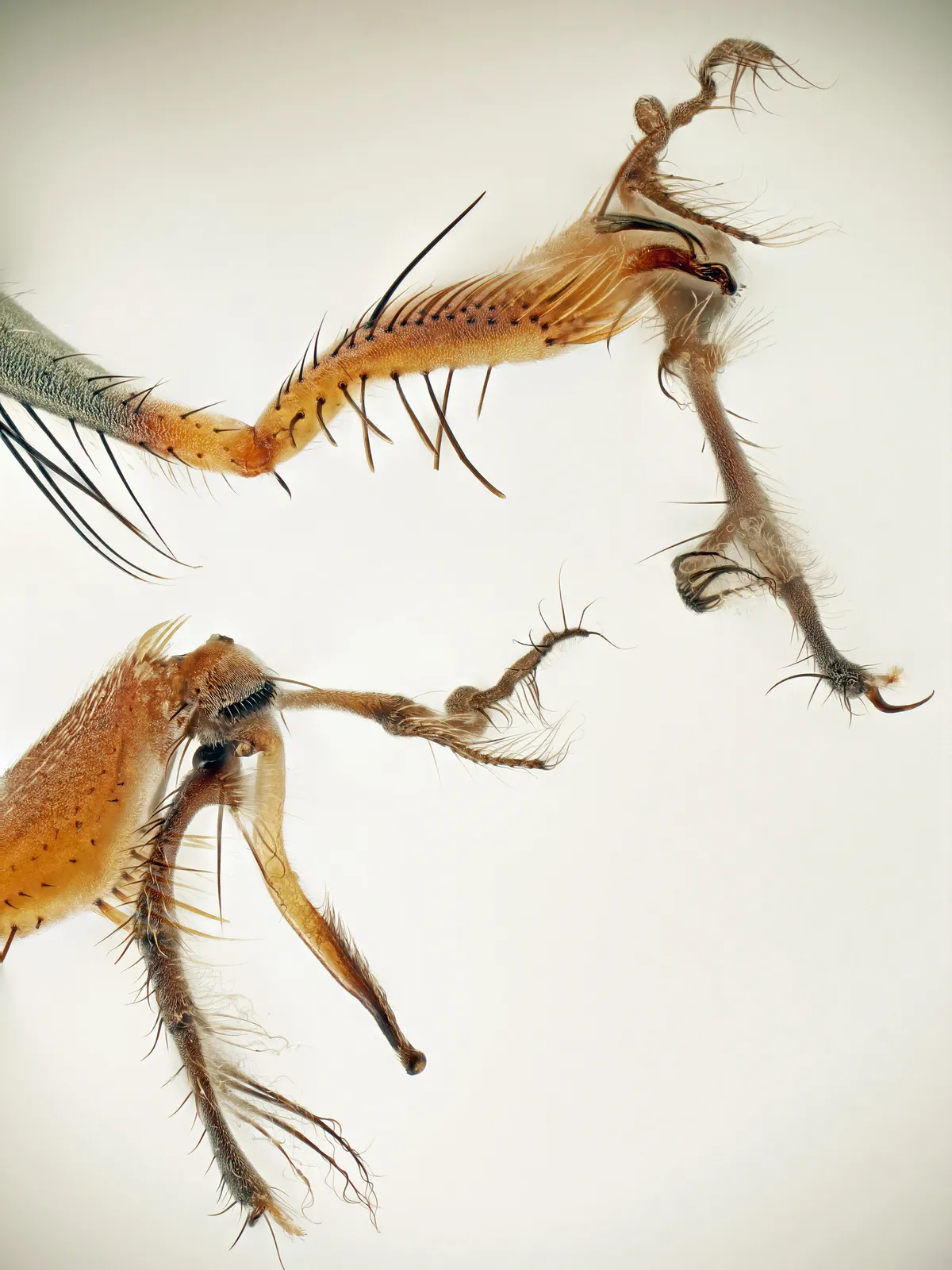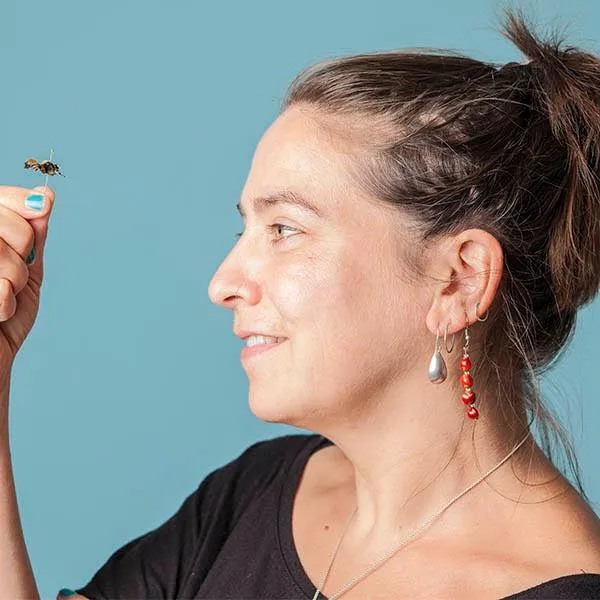Dolichopodidae is a large family of over 300 species found across the British Isles, comprising mainly of small attractive metallic flies associated with various damp habitats including rotting wood, wet mud and the margins of wetlands. Both the larvae and the adults are predacious, capturing and feeding mostly on small invertebrates.

The larvae are semi-aquatic and aquatic and can be found in freshwater habitats as well as the intertidal zone of our seashores. The adults frequent these habitats too as well as some of the more open grounds such as meadows and gardens. The adult males are often the ones that we see – wing or leg waving in an attempt to attract the opposite sex.
The males of many species in this family sport adornments on their long legs for entertaining courtship displays in front of potential suitors. The species with the most extravagant legs is Campsicnemus magius which appropriately has the common name of fancy-legged fly.
This British species is so truly remarkable that a beautiful painting of a male specimen by Peter Skidmore adorns the front cover of 'A Dipterist's Handbook' published by The Amateur Entomologist's Society (AES).

According to current literature, the definition of the scientific name is not clear cut. 'Campsicnemus' is clearly given as 'curved leg' but there is only a vague suggestion that 'magius' might mean 'magic'. So, it could very well be called magical curved-leg fly but the common moniker of fancy-legged fly is apt.
Although the name may not be clear, the adornments are and the front tarsi bear a fantastic tangle of ribbons, bristles, hairs and protrusions that defy belief.

This is a UKBAP species – that is a UK Biodiversity Action Plan species -and as such a species of high conservation concern. The British distribution is restricted and currently concentrated on both sides of the Thames corridor, a few sites in Suffolk, with one or two outliers in inland saltmarshes in Cheshire.
This limited distribution is due to quite specific habitat requirements which are saltmarshes or inland areas subject to high salinity. More specifically, areas of wet mud on the edges of pools in the brackish zone between saltwater and freshwater are necessary for breeding and larval development.
During two recent Dipterists Forum summer field meetings, specimens were found both in Kent along the Thames and also at an inland saltmarsh in Cheshire prompting admiration back in the communal laboratories.
These field trips are open to everyone and happen two or three times a year across the country, and are a great way to be outdoors, to study flies, and have resident experts at your fingertips.
So pay attention to your ponds, your rivers and all other open freshwater habitats for members of this striking fly family. And remember to add to iRecord any positive identification that you can make or add images to either the Dipterists Forum Facebook page or twitter account @Dipteristsforum to help with identifications.
Andrew Cunningham is a dipterist from mid Devon, who started studying Diptera twelve years ago and is a founding member of the Devon Fly Group.

Dr Erica McAlister is the senior curator of Diptera at the Natural History Museum of London, a committee member of The Dipterists Forum and president of the Amateur Entomologists' Society.

The Dipterists Forum, a UK organisation dedicated to all things fly, is actively involved in collecting, recording and researching our UK species - most of which are not restricted to just the UK. The distribution records help us understand population distributions and change associated with climate and land use. It is essential for us to get out there and help. And this family, along with the craneflies and other closely related species has its own recording group – the Cranefly recording Scheme.

Main image: Campsicnemus magius. © Peter Harvey/Buglife